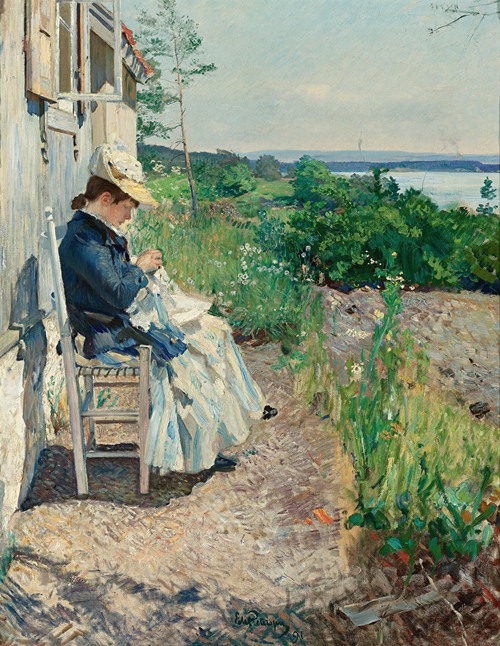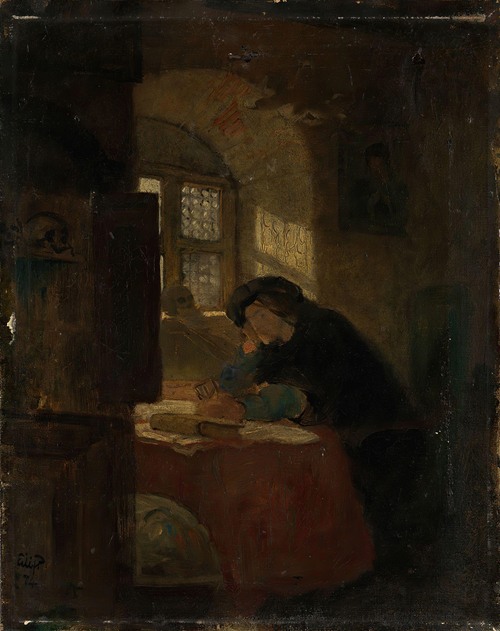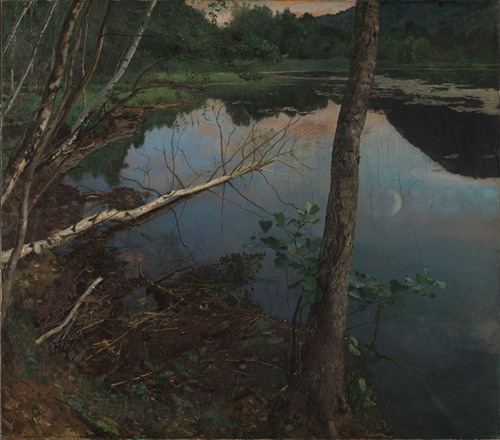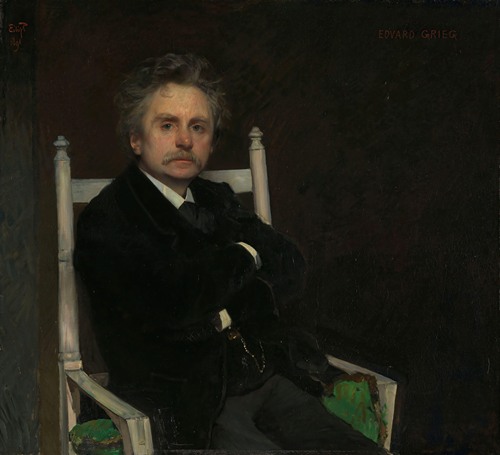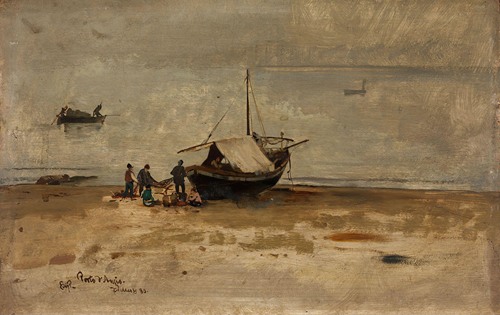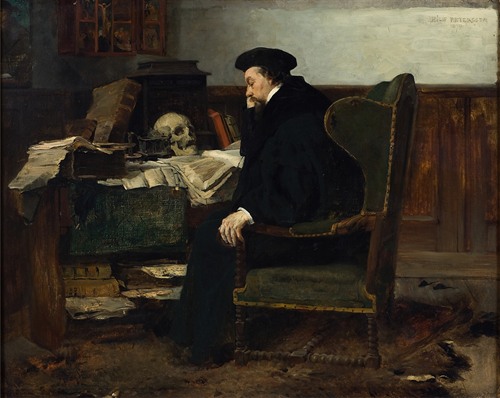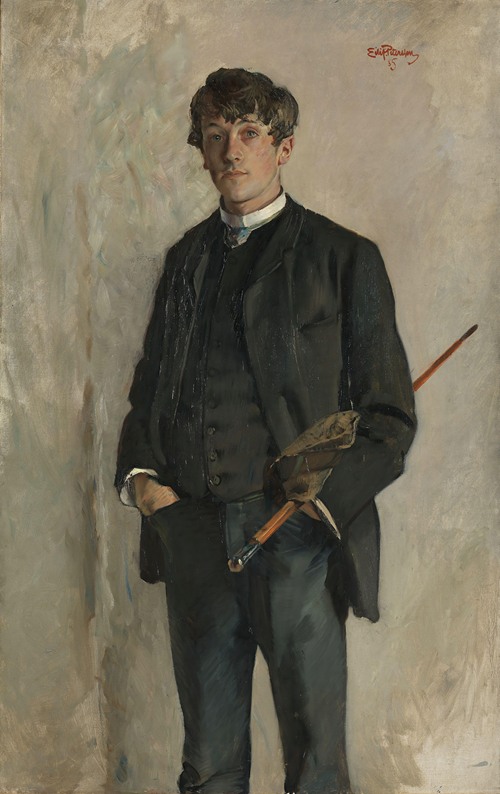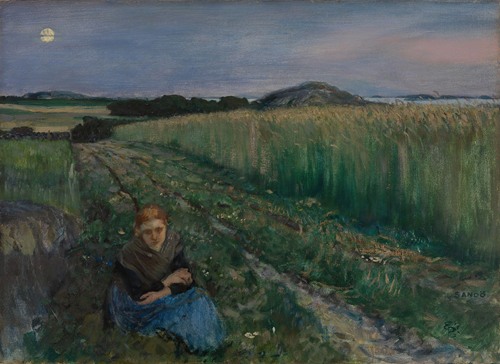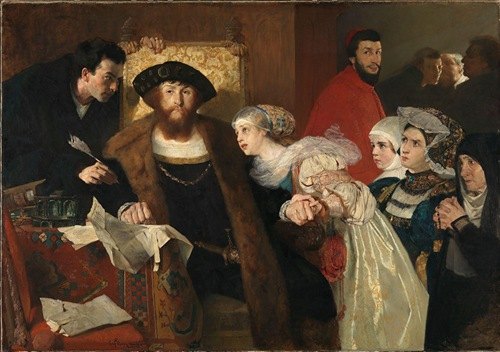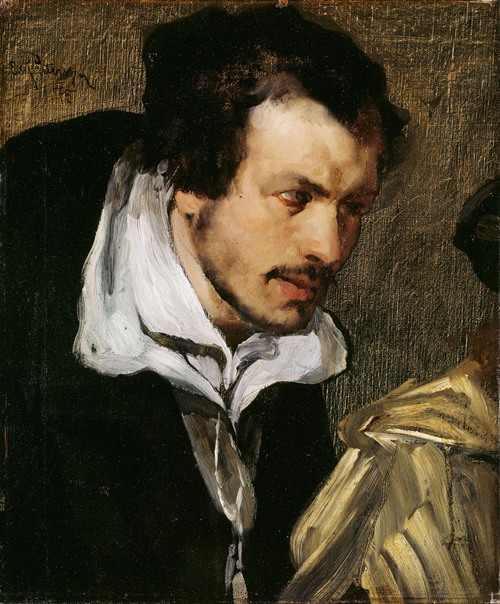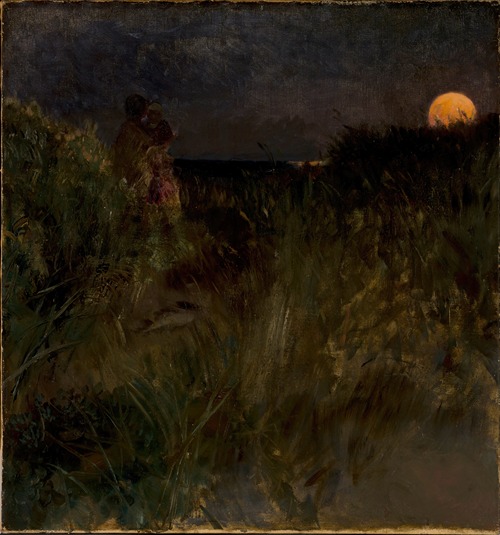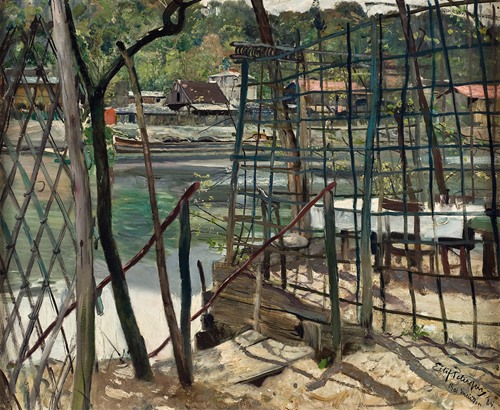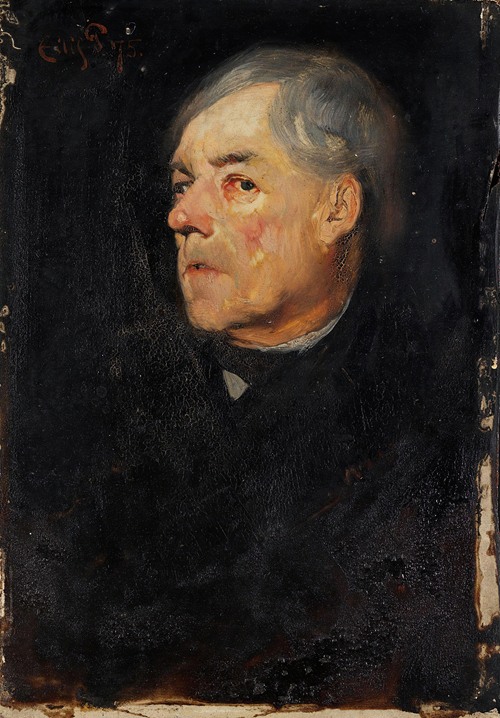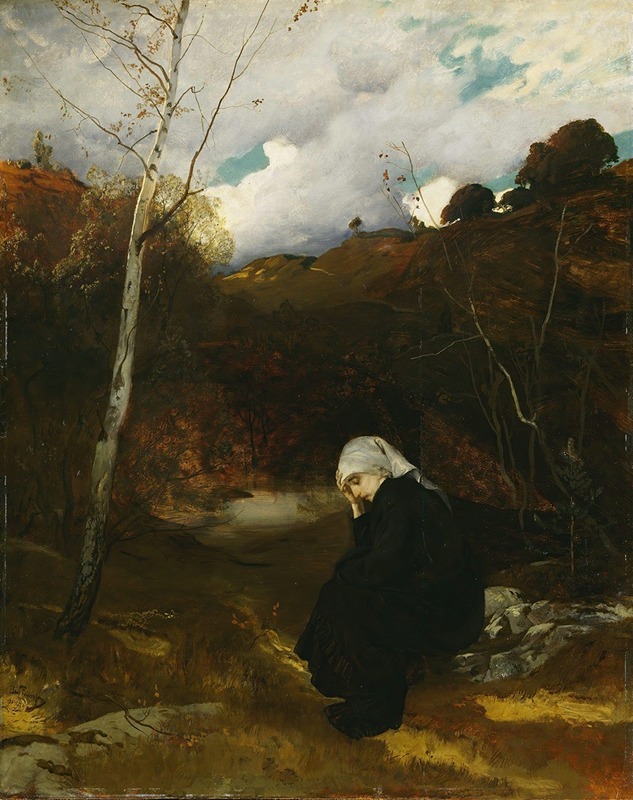

Hjalmar Eilif Emanuel Peterssen was a Norwegian painter. He is most commonly associated with his landscapes and portraits.
Biography
Hjalmar Eilif Emanuel Peterssen was born in Christiania, now Oslo, Norway. He was the son of Jon Peterssen (1814–1880) and Anne Marie Andersen (1812–1887). He grew up in the neighborhood of Hegdehaugen in the district of Frogner.
He attended the Norwegian National Academy of Craft and Art Industry (Statens håndverks- og kunstindustriskole) in Christiania from 1866–1870. He entered the Johan Fredrik Eckersberg School of Painting in 1869. He trained with Knud Bergslien and Morten Müller in the autumn of 1870. In 1871 he left Oslo to study at the Royal Danish Academy of Fine Arts in Copenhagen. Later that year he moved to Karlsruhe, where he was a student of Ludwig des Coudres at the Academy of Fine Arts, Karlsruhe and Wilhelm Riefstahl at Weimar Saxon-Grand Ducal Art School. In the fall of 1873 Peterssen traveled to Munich where he studied under at the Academy of Fine Arts, Munich under Wilhelm von Diez and Franz von Lenbach. In Munich Peterssen met other famous artists such as Arnold Böcklin and Karl von Piloty.
Eilif Peterssen made several trips to France and Italy. In 1896 he went to Arques-la-Bataille in Normandy, where he painted several landscapes, and from France he went together with his family to Rome in 1897. In 1903, Peterssen again visited Italy and in Rapallo near Genova, he painted the impressionist motif Winter in the South (Washerwomen in Rapallo). During the dissolution of Union between Sweden and Norway in 1905, Peterssen was commissioned to design the new coat of arms of Norway.
In his later years Peterssen travelled all over Norway to paint landscapes. He made several visits to Skogstad in Valdres, where he was particularly inspired by the great mountain landscape. In 1920–21, he made his last travel abroad to Cagnes-sur-Mer and Saint-Paul-de-Vence in Provence where he painted several landscapes of the small villages on the hills between Nice and Cannes.
He died at Lysaker in Bærum on December 29, 1928.
